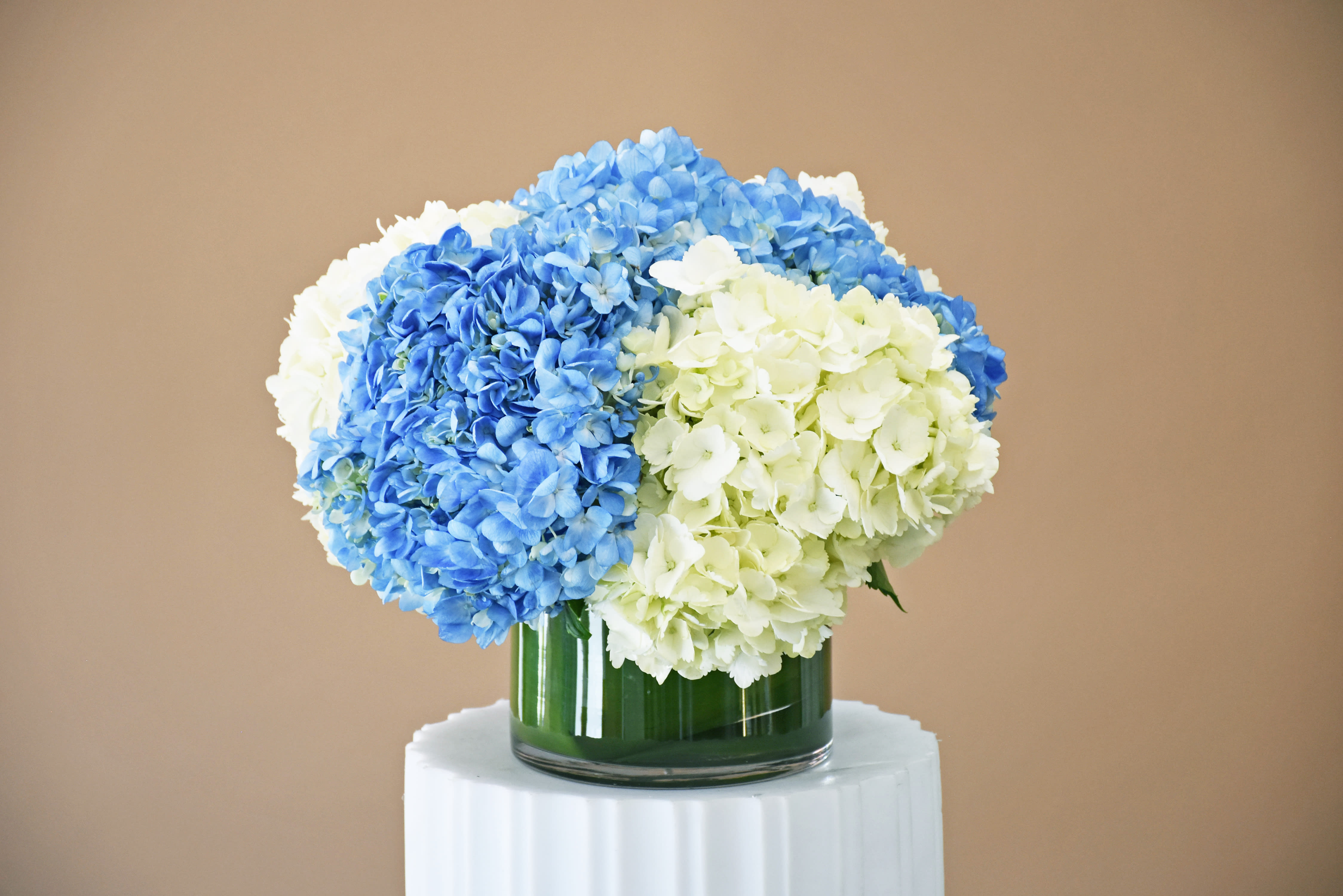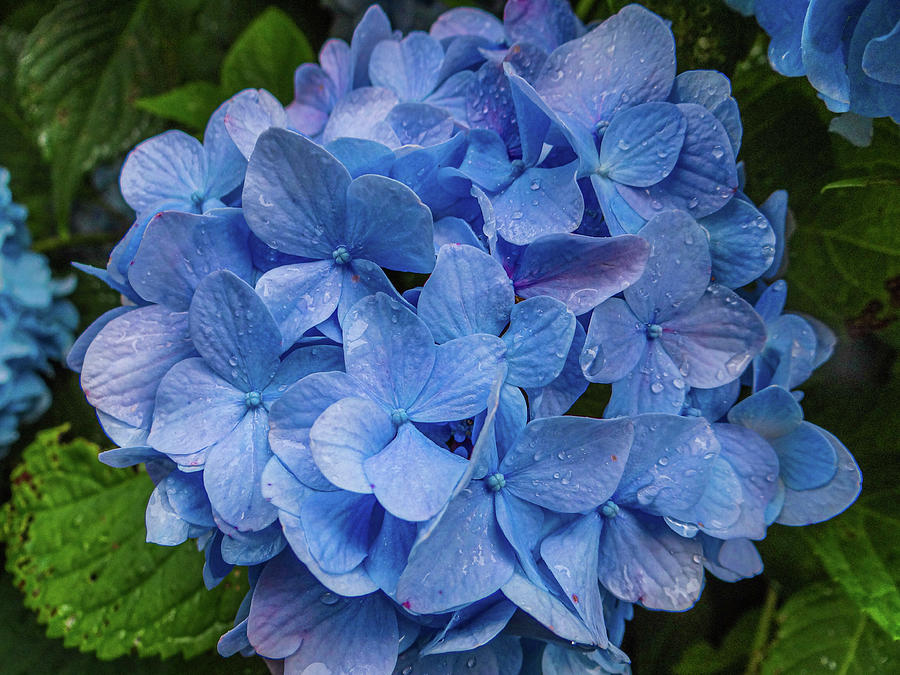Blue And White Hydrangeas: The Perfect Flower For Your Summer Garden
Blue and White Hydrangeas: The Perfect Flower for Your Summer Garden
Hydrangeas are a popular choice for summer gardens, and for good reason. They come in a wide variety of colors, sizes, and shapes, and they can add a touch of elegance and beauty to any landscape.
In this blog post, we will focus on blue and white hydrangeas. These two colors are particularly popular, and they can be used to create a variety of stunning garden designs.
Why Choose Blue or White Hydrangeas?
There are many reasons why you might choose to plant blue or white hydrangeas in your garden. Here are a few of the most important:
- Color: Blue and white are both calming and serene colors, which can create a sense of peace and tranquility in your garden.
- Bloom time: Blue and white hydrangeas typically bloom in the summer, which means that they will add color and interest to your garden during the warmest months of the year.
- Variety: There are many different varieties of blue and white hydrangeas to choose from, so you can find one that is perfect for your garden's size and style.
- Hardiness: Blue and white hydrangeas are typically hardy in USDA zones 4-9, which means that they can withstand cold winters in most parts of the country.
How to Choose the Right Blue or White Hydrangea for Your Garden
When choosing a blue or white hydrangea for your garden, there are a few factors you will need to consider. These include:
- Size: Blue and white hydrangeas come in a variety of sizes, so you will need to choose one that will fit in your garden. If you have a small garden, you might want to choose a dwarf variety. If you have a larger garden, you might want to choose a larger variety.
- Color: There are many different shades of blue and white hydrangeas available. If you have a specific color in mind, be sure to choose a variety that will produce that color.
- Bloom time: Blue and white hydrangeas typically bloom in the summer, but some varieties bloom in the spring or fall. If you want your hydrangeas to bloom for a longer period of time, you might want to choose a variety that blooms in multiple seasons.
- Hardiness: As mentioned earlier, blue and white hydrangeas are typically hardy in USDA zones 4-9. However, some varieties are more hardy than others. If you live in a cold climate, you will need to choose a variety that is hardy to at least zone 4.
How to Plant and Care for Blue and White Hydrangeas
Once you have chosen the right blue or white hydrangea for your garden, you will need to plant it properly. Here are some tips for planting blue and white hydrangeas:
- Choose a location that receives partial shade. Blue and white hydrangeas do not like full sun, so they will do best in a location that receives partial shade.
- Prepare the soil. Blue and white hydrangeas prefer slightly acidic soil. If your soil is alkaline, you will need to add some peat moss or sulfur to the soil before planting.
- Plant the hydrangea at the same depth as it was growing in the pot.
- Water the hydrangea well after planting.
Once your blue or white hydrangea is planted, you will need to care for it properly. Here are some tips for caring for blue and white hydrangeas:
- Water the hydrangea regularly. Blue and white hydrangeas need to be watered regularly, especially during the summer months.
- Fertilize the hydrangea in the spring. Use a fertilizer that is specifically designed for hydrangeas.
- Deadhead the hydrangeas after they bloom. This will encourage them to bloom again next year.
Conclusion
Blue and white hydrangeas are a beautiful and versatile addition to any garden. They are easy to care for, and they can add a touch of elegance and beauty to any landscape. If you are looking for a new flower to plant in your garden this summer, consider a blue or white hydrangea.
Blue and white hydrangeas are some of the most beautiful flowers in the world. Their delicate petals can range in color from pale blue to deep purple, and their blooms can be large and showy or small and dainty. If you're interested in learning more about these stunning flowers, I highly recommend visiting .
is a comprehensive resource for all things hydrangea. The site includes information on the different types of hydrangeas, how to care for them, and how to propagate them. There are also articles on the history of hydrangeas, their symbolism, and their uses in traditional medicine.
In addition to its informative articles, also features a beautiful gallery of hydrangea photos. These photos will give you a better idea of the different colors and shapes that hydrangeas can come in.
Whether you're a beginner gardener or a hydrangea enthusiast, I'm sure you'll find something of value on . So what are you waiting for? Visit the site today and learn more about these amazing flowers!
FAQ of blue and white hydrangea
Q: What causes hydrangeas to change color?
A: The color of hydrangeas is determined by the pH of the soil. In acidic soil, hydrangeas will bloom blue, while in alkaline soil, they will bloom pink or white. You can change the color of your hydrangeas by adjusting the pH of your soil.
Q: How do I get my hydrangeas to bloom blue?
A: To get your hydrangeas to bloom blue, you need to have acidic soil. You can test the pH of your soil with a pH test kit. If your soil is alkaline, you can add sulfur to acidify it. You can also add organic matter to your soil, such as peat moss or compost.
Q: Why do my blue hydrangeas turn white?
A: There are a few reasons why your blue hydrangeas might turn white. One possibility is that the soil pH has become too alkaline. Another possibility is that the hydrangeas are not getting enough sunlight. Finally, it is also possible that the hydrangeas are not getting enough nutrients.
Q: How can I prevent my hydrangeas from turning white?
A: To prevent your hydrangeas from turning white, you need to make sure that the soil pH is acidic. You should also make sure that the hydrangeas are getting enough sunlight and nutrients.
Q: What are some tips for caring for blue and white hydrangeas?
A: Here are some tips for caring for blue and white hydrangeas:
- Plant hydrangeas in full sun or partial shade.
- Water hydrangeas regularly, especially during hot, dry weather.
- Fertilize hydrangeas in the spring and fall with a balanced fertilizer.
- Deadhead spent blooms to encourage new growth.
- Protect hydrangeas from frost in the winter.
Image of blue and white hydrangea
5 different images of "blue and white hydrangea" from Pinterest:
- A large bouquet of blue and white hydrangeas in a vase. The hydrangeas are arranged in a loose, cascading style, and the colors are a beautiful blend of blue, white, and green.

- A close-up of a single blue hydrangea bloom. The bloom is perfectly round and symmetrical, with a deep blue color that is almost purple.

- A field of blue and white hydrangeas in full bloom. The hydrangeas are in full bloom, and the field is awash in shades of blue and white.
- A small white hydrangea bush with a few blue blooms. The bush is covered in small, white hydrangea blooms, with a few blue blooms scattered throughout.
- A blue and white hydrangea garland. The garland is made up of blue and white hydrangea blooms, and it is perfect for decorating a doorway or mantle.


Post a Comment for "Blue And White Hydrangeas: The Perfect Flower For Your Summer Garden"